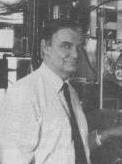The GPS and the Constant Velocity of Light
Year: 2006
When the velocity of light is measured with the Global Positioning System (GPS), we find that it is (c-v) or (c+v), in which v is the rotation velocity of the Earth where the cities are located. We know that the Lorentz transformations and special relativity are unable to provide a realistic physical explanation of the behavior of matter and light. We show here that all these phenomena can be explained using Newton's physics and mass-energy conservation, without space contraction or time dilation. We have seen previously (1) that the principle of mass-energy conservation requires that clocks run at a slower rate in a moving frame, and physical bodies become longer because of the increase of the Bohr radius. These results allow us to answer the question: With respect to what, does light travel? For example, when we move away at velocity v, from a source emitting light at velocity c, the relative motion of the radiation is observed from the Doppler shift. How can we explain logically that these photons "appear" to reach us at velocity c and not (c-v)? The conventional explanation relies on special relativity, but it implies an esoteric space-time distortion, which is not compatible with logic. This paper gives a physical explanation how the velocity of light is really (c-v) with respect to the observer, even if the observer's tools always measure a velocity represented by the number c. We explain how this problem is crucial in the Global Positioning System (GPS) and in clocks synchronization. The Lorentz' transformations become quite useless. This apparent constant velocity of light with respect to a moving frame is the most fascinating illusion in science.


